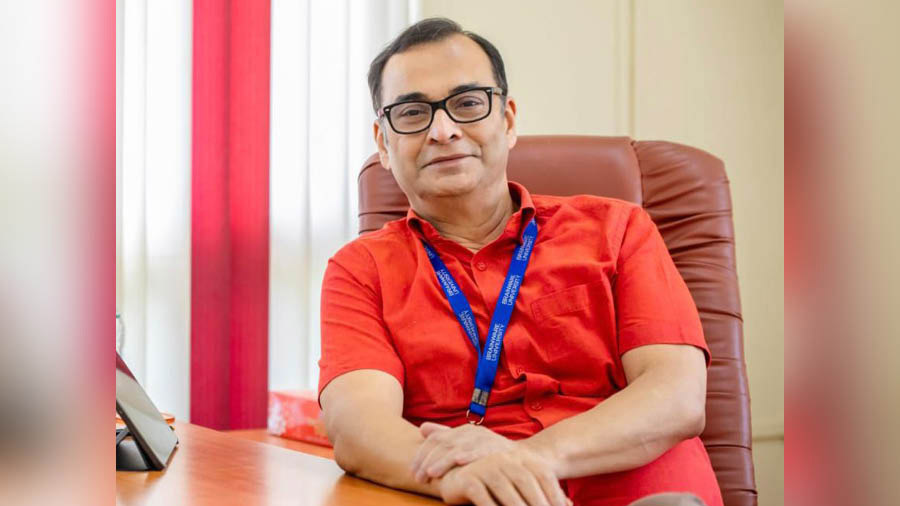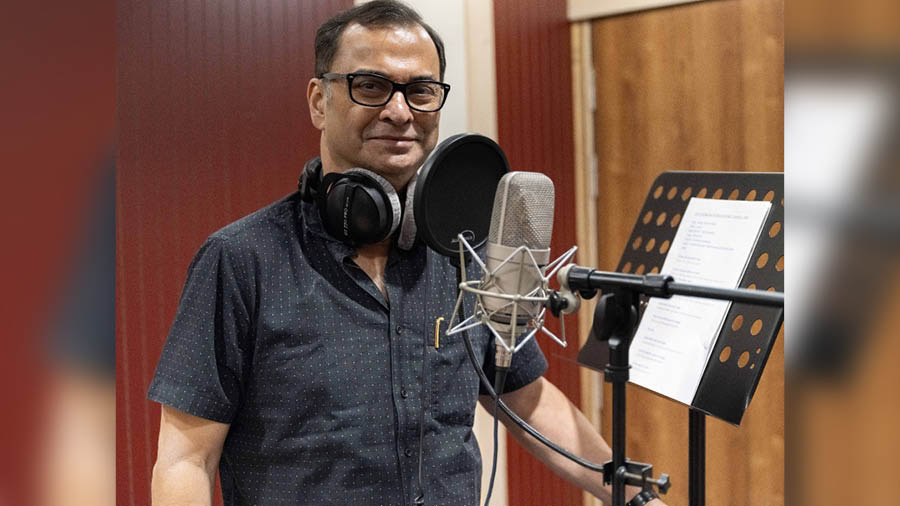I do not hesitate to say that my songs have found their place in the heart of my land, along with her flowers that are never exhausted, and that the folk of the future, in days of joy or sorrow or festival, will have to sing them.
— Rabindranath Tagore, as quoted by Rabindrasangeet exponent Shantideb Ghosh in Rabindrasangeet Bichitra
Jug, bodlay, kaal bodlay, taar songe onek kichhu bodlay. Tobe shob cheye sthayi hobe amar gaan, eta jor kore bolte pari. Bishesh kore Bangalira, shoke dukkhe, sukhe anande amar gaan na geye tader upay nei. Juge juge ei gaan tader gaite hobei.
(Time changes, and a lot changes with that. But I can say with some conviction that my songs will be the most ever-lasting, especially among Bengalis, who will sing my songs in sorrow and in happiness generation after generation).
— Rabindranath Tagore, as quoted by Rani Chanda in Alapchari Rabindranath
It is said there’s a Rabindrasangeet for every season, every occasion and every mood. A Rabindrasangeet project launched at the initiative of Brainware University founder-chancellor Phalguni Mookhopadhayay aims to expand the reach of Tagore and his songs to a wider audience through a YouTube channel.
Launched on Rabindra Jayanti, May 9, this year, the first episode of the channel has already clocked nearly 25,000 views and counting. “Our goal is to reach at least 1,00,000 non-Bengali and Bengali households outside India through 100 songs,” said Mookhopadhayay, the founder-chairman and managing director of Brainware Consultancy Private Limited and founder chairman of Webguru Infosystems Private Limited.
The songs are sung by Mookhopadhayay himself and recorded and produced at Brainware University’s state-of-the-art studios. Every song is introduced with some anecdotes to give it context. Details such as year of composition, which book it is a part of, which parjaay the song falls under and the raga it is based on.

Mookhopadhayay was disappointed that many young students hardly knew about Tagore’s work
The beginning
During the Covid-induced lockdown, Mookhopadhayay spent a lot of time researching on Rabindrasangeet. “I listen to a lot of Tagore songs and that piqued my interest. I was intrigued and wanted to know more. There is no dearth of research on this subject. I read almost 62 books before starting on this project. I have never been trained in music. I tried to listen to the different renditions of a single song by different artistes,” he said.
Mookhopadhayay was disappointed that many young students hardly knew about Tagore’s work. “During my conversation with students, I realised that they know who Rabindranath Tagore is but most of them hardly have any knowledge. This is really heart-wrenching. During my travels to other countries, too, I found that except to a handful of Bengalis and researchers, Tagore was almost unknown. I wanted to do something about this,” he said.
It is this lack of awareness about Rabindrasangeet that prompted Mookhopadhayay to come up with the project. “This is our small way of paying homage to the treasure trove named Rabindrasangeet. We have tried to find out the stories behind each song and incorporated them in the videos. I have sung the songs. Each song starts with a voiceover in English so that listeners who do not know Bengali can also understand the lyrics.”
The idea
Mookhopadhayay plans to record 100 Rabindrasangeets. “If I record one song every 10 days, it will take me almost two years to complete the project. Till now, I have released five songs (Aguner poroshmoni, Ami chini go chini tomare, Mayabonobiharini, Purano sei diner kotha and Chhaya ghanayichhe bone bone) and each of them has got around 24,000 views.”
The 100 songs to be recorded are based on Mookhopadhyay’s own playlist. “I have listened to Rabindrasangeet sung by Debabrata Biswas, Hemanta Mukhopadhyay, Dwijen Mukhopadhyay, Sagar Sen, Subir Sen, Srikanta Acharya, Suchitra Mitra, Kanika Bandyopadhyay and others. Since I don't have any formal training and am ignorant of the nuances of vocal music, I have learnt the songs from their albums. Songs like Poush toder dak diechhe or Alo amar alo, which I used to listen to in my childhood, are also on the list.”
Research
The project involved extensive research work. Sudipta Bhattacharjee, adjunct professor of Brainware University in the department of Media Science and Journalism, put in immense effort. “All the anecdotes have been scripted by her. The subtitles have also been written by her. She put her heart and soul into the project,” Mookhopadhayay said.
“I was involved in the editorial aspect of the project. The subtitles that you see in the songs are all literal translations. At times, we have used Tagore’s own translation like in Ami chini go chini tomare . For some songs Tagore had skipped lines in some places and given a synopsis. It is very difficult when one is writing subtitles. So we wrote our own subtitles, too. Since the initial target was the non-Bengali audience, understanding each word being sung was important. Hence the literal translation. Coming up with suitable anecdotes for each song was also difficult since a lot of research work was required,” Bhattacharjee said.
The man behind the idea
Mookhopadhayay worked as a market planner for nearly a decade before setting out on his own.
The ex-student of Ramakrishna Mission Vidyalaya, Narendrapur, graduated with honours in Economics from St Xavier's College, Kolkata, completed his master’s in Economics from Calcutta University and MBA from IISWBM, before joining Hindustan Lever as a management trainee.
Besides being an ardent listener of Rabindrasangeet and Bengali adhunik gaan (modern songs), Mookhopadhyay is also a weekend singer. Not only Rabindrasangeet, he has recorded Bengali and Hindi songs of Hemanta Mukhopadhyay.
Mookhopadhayay is a self-taught digital artist who dabbles in photography.
